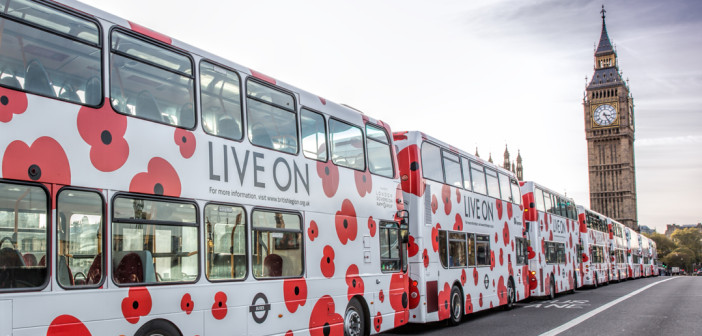Around one in eight contactless journeys in London now being made using a mobile phone or smart device
Half of all Tube and rail pay as you go journeys are now regularly made using contactless payment cards or mobile devices, the latest figures from Transport for London (TfL) have revealed.
The convenient payment method, which launched on buses in London in December 2012 and across Tube and rail services in London in September 2014, is now being used to make around 17 million journeys a week across London. Since it launched, more than 1.7 billion journeys have been made across the capital, showing how Londoners and visitors have taken to using contactless payments as part of their daily life.
The number of journeys made in London using contactless has risen from around 25% just two years ago. On buses and trams, the use of contactless is also increasing rapidly, with around 45% of all pay as you go journeys now being made using contactless.
While half of all pay as you go journeys across London are now made using contactless payments, a number of stations, including Blackfriars, Shoreditch High Street, Canary Wharf and Clapham Common, are consistently seeing more that 60% of all pay as you go journeys made using contactless. Close to half a million contactless pay as you go journeys are made from Oxford Circus every week, the equivalent of 50 cards touching in every minute.
Contactless journeys made using mobile devices continue to increase, with around one in eight contactless journeys in London now being made using a mobile phone or smart device.
On the London bus network, the most popular bus route for using contactless is the route 521 from Waterloo station to London Bridge station via Holborn, which regularly sees more than 60% of all pay as you go journeys being made using contactless.
London’s airports where pay as you go is accepted continue to see a growing proportion of contactless journeys made from both UK and overseas customers. More than 35% of pay as you go journeys from Heathrow airport, more than 40% of pay as you go journeys from London City Airport and more than 55% of pay as you go journeys from Gatwick airport towards London are now made using contactless.
TfL’s contactless ticketing system automatically calculates the best value fare based on the customer’s specific journey history and then charges them at the end of the day, ensuring customers always pay the best fare in the easiest and most convenient way. This means that customers could save money compared to buying a one day Travelcard, helping them to travel around London more affordably. Customers using contactless also benefit from weekly capping, which will be expanded to Oyster card users later this year, as well as the Hopper fare, which allows bus and tram customers to make unlimited journeys within an hour for the price of one.
Commented Simon Black, CEO, PPRO Group: “The news that half of all London Tube and rail pay as you go journeys are now made using contactless is a clear sign that Britain is well on its way to become a cashless society by 2020, and the introduction of smartwatches is helping to lead the charge. In fact, PPRO Group’s research found physical money is fast becoming redundant in today’s increasingly connected society with a third (33%) of the UK stating that they never use cash anymore. Unsurprisingly this figure rises to 51% among millennials, while older generations are stoically sticking to the coins in their purses as only 27% prefer to shop online.
“Given the option 26% of us would never choose to pay cash when buying an item in a shop,” added Black. “In fact, more than a quarter of us (26.35%) find it irritating when we have to pay by cash rather than by card. The popularity of mobile and contactless payments clearly demonstrates the acceptance of change when it comes to payments in the UK.
“We live in a culture of increasing convenience which has influenced, and will dramatically transform, the way in which we’ll pay for items now and in the future. From using contactless cards to pay for a train journey, taxis at the click of an app with UBER, to a one-click shop on Amazon, quick and easy is winning the war,” Black concluded.
Shashi Verma, CTO at TfL said: “Contactless ticketing has made travelling in and around London and the South East by bus, Tube or rail quick, convenient and affordable. We’re delighted with how popular this innovation has become and, with the future extension of this technology across the Elizabeth line, even more customers will benefit in the future. We are also now working with other world cities to share our experience and knowledge to help them introduce a similar ticketing system in the coming years.”
The success of contactless in London is now leading to more world cities introducing the technology as a convenient method of paying for travel. In 2016 TfL signed a deal worth up to £15 million with Cubic Transportation Systems, allowing them to adapt the capital’s contactless ticketing system worldwide. Since then, New York, Sydney, Miami and Boston have all announced that they plan to introduce contactless payments in the coming years. From May 2018, pay as you go will also be extended to cover TfL Rail services between Heathrow airport and Paddington station, and will also cover the entire Elizabeth line when it launches from December 2018.





